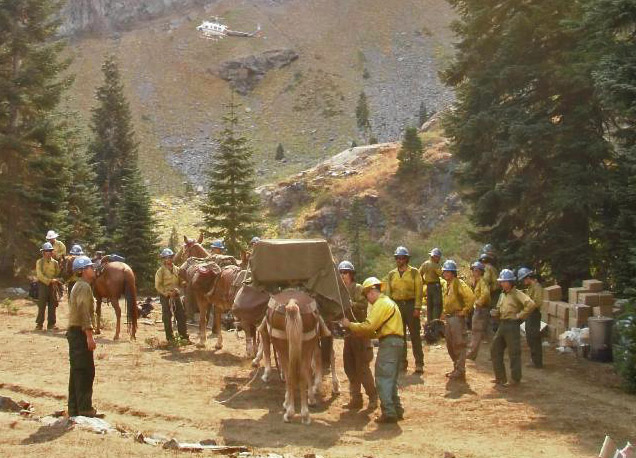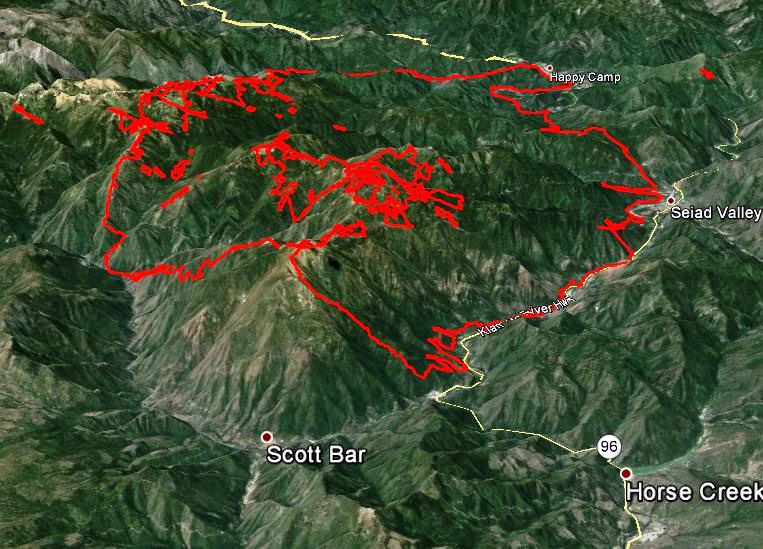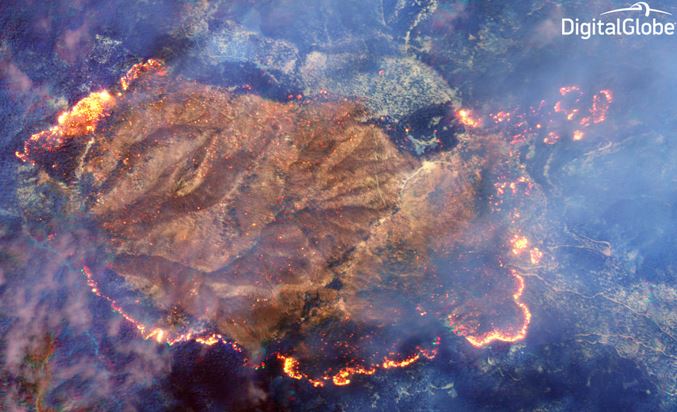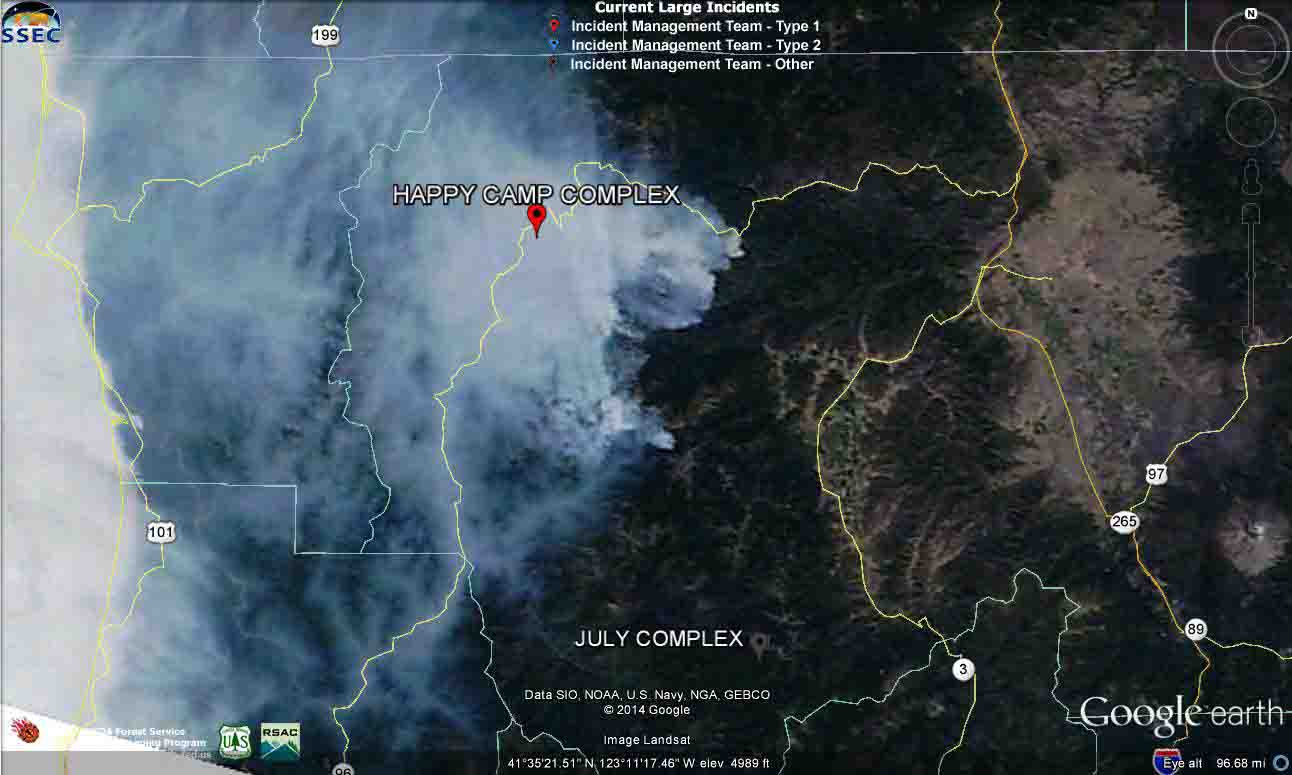
The Happy Camp Complex of fires in northwest California continued to expand on Friday, adding another 5,660 acres to bring the total up to 88,546 acres. The Incident Management Teams are calling it 25 percent contained. Another spot fire across the Klamath River and Highway 96 burned about two acres before it was knocked down north of the intersection of the highway and Scott River Road.
The Happy Camp area is infamous among wildland firefighters and locals for the inversions that trap smoke and keep it from dispersing. Some firefighters, after spending a couple of weeks in the polluted air, return home with respiratory problems that can linger for weeks or months.
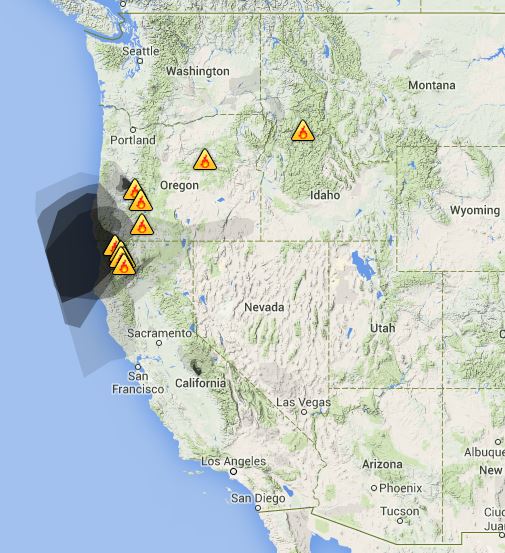

The air quality agencies recognize the problem, of course, but there is little they can do about it other than inform the public about how bad it is. The chart below warns that during the three day period five communities had or will have “unhealthy” air to breathe for at least one day: Seiad Valley, Happy Camp, Somes Bar, Orleans, and Weitchpec. Two others, Hoopa and Willow Creek, were in the “Unhealthy for Sensitive Groups (USG)” category.
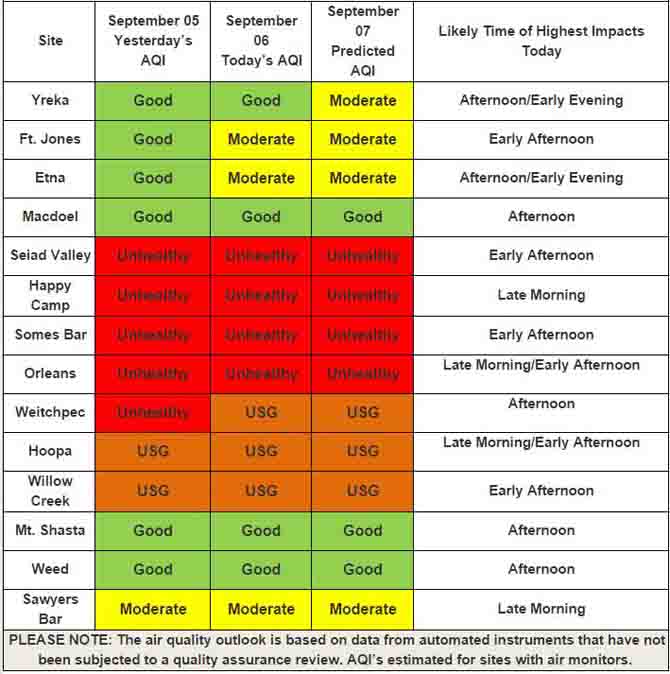
The California Smoke Information website had more details about the wildfire smoke conditions, posted on September 6, 2014:
Yesterday — Winds pushed smoke to the Southwest which impacted the communities of the lower Klamath, Salmon, and Trinity River drainages. Smoke pooled into the valleys at night and kept smoke concentrations high. The forecast change in wind direction was delayed and has yet to occur.
Today — Smoke is predicted to travel southwest down the Klamath and Salmon River drainages in the morning hours. By afternoon, smoke will change directions and head eastward to the Scott and Shasta Valleys. Smoke will pool in valleys and drainages overnight.
Tomorrow — Weather will be similar to the previous day. Smoke is forecast to pool into valleys and drainages with low dispersion. Communities to the west of the fires may experience improved conditions as an onshore flow pushes the smoke slightly westward.
To see the most current smoke reports on Wildfire Today, visit the articles tagged “smoke” at https://wildfiretoday.com/tag/smoke/

